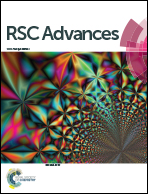Fabrication of a novel high-performance leather waste-based composite retention aid
Abstract
In this study, a novel biomass composite retention aid was developed by using collagen hydrolysate (CH) extracted from collagen waste as the starting material, glutaraldehyde as the organic crosslinking agent and polymeric aluminum chloride (PAC) as the inorganic modifying agent. The as-prepared retention aids were characterized by gel chromatography, hydrodynamic diameter, zeta potential, transmission electron microscope (TEM), ultraviolet-visible adsorption spectra (UV-Vis), Fourier infrared spectrometer (FT-IR), and X-ray photoelectron spectroscopy (XPS). The results indicated that glutaraldehyde increased the molecular size of CH (i.e., CCH) through the crosslinking reaction between the aldehyde group of glutaraldehyde and the primary amine group of CH. Subsequently, the PAC further increased cationic charge density and molecular size of CCH (i.e., PAC–CCH) by the coordination interaction and self-assembly, thereby endowing PAC–CCH with better charge neutralization and bridging flocculation abilities. Compared to CH, CCH and PAC, the PAC–CCH exhibited excellent retention and drainage performances, and the best retention rate was greater than 85% at the dosage of 0.6 wt%. Our experimental results suggest that collagen wastes have a great potential to produce novel high-performance retention aids.



 Please wait while we load your content...
Please wait while we load your content...